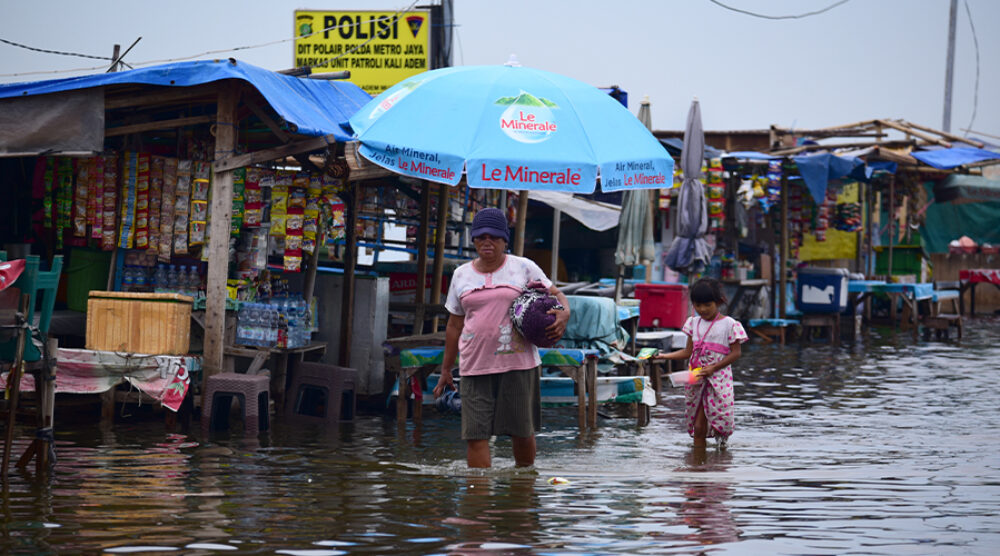FEBI DWIRAHMADI, PAUL BARNES, ARIF WIBOWO, AVIANTO AMRI AND CORDIA CHU |
Jakarta, Indonesia’s most populous city with an estimated 10.56 million residents in 2020, faces escalating challenges exacerbated by rapid urbanisation and climate change projections. Anticipated to surpass 11.4 million by 2035, Jakarta’s population growth fuels concerns about the city’s biophysical environment and its susceptibility to devastating floods.
Dating back to the 17th century, Jakarta’s struggle against floods is deeply ingrained in its history. The flood of 1621 serves as a stark example, submerging a significant part of the city and inflicting substantial economic losses on the Dutch Colonial government. Researchers emphasise the pivotal role of historical data in shaping effective flood mitigation and risk reduction strategies.
Recent studies underscore the compounding impact of climate change on Jakarta’s urban flood management. Beyond the persistent threat of coastal flooding and sea level rise, the evolving climate patterns and urban environmental changes present additional complexities. As the city grapples with its historical flood legacy, the interplay of climate change and urban dynamics demands a multifaceted and adaptive approach for robust urban flood resilience.
Examining the challenges of integrating disaster risk reduction (DRR) and climate change adaptation (CCA), this study draws on Indonesia’s experience. The fragmentation between these efforts, leading to potential duplication, creates confusion and diminishes the effectiveness of urban flood management. Through the lens of collaborative governance, the study analyses barriers and proposes strategies for aligning DRR and CCA practices in the context of Jakarta.
Key Findings
- Institutional Fragmentation: The study identifies institutional fragmentation as a significant barrier to aligning DRR and CCA actions in Jakarta.
- Collaboration Mechanisms: Inconsistent facilitation and collaboration mechanisms further impede effective integration between DRR and CCA efforts.
- Leadership Vacuum: The absence of accountable leadership emerges as a critical impediment, hindering successful partnership-building processes necessary for political and technical collaboration.
- Urban Vulnerability: Leadership plays a pivotal role in developing sustainable relationships, convincing stakeholders to collaborate, and sharing a common vision to reduce the direct and indirect impacts of flooding in Jakarta.
Drawing lessons from Indonesia’s experience, the study calls for political and technical solutions to overcome barriers, emphasising the need for accountable leadership. The insights gained from Jakarta’s challenges in linking DRR and CCA provide valuable guidance for global cities confronting similar urban flood complexities.
This study contributes crucial insights to the global discourse on urban flood management, offering a nuanced perspective on the intersection of historical challenges, climate change dynamics, and the imperative of collaborative governance in the context of Jakarta.
Dr Febi Dwirahmadi1,2, Paul Barnes1,3, Arif Wibowo4, Avianto Amri2 and Cordia Chu1,3,5
- 1. Centre for Environment and Population Health, Griffith University, Brisbane 4111, Australia
- 2. Indonesian Disaster Management Society, Jakarta 13420, Indonesia
- 3. National Network for Healthy Environment and Lives (HEAL), Parkville 3010, Australia
- 4. International Council for Local Environment Initiatives (ICLEI), Jakarta 12920, Indonesia
- 5. Griffith Asia Institute
This article is a summary of a paper titled “Linking disaster risk reduction and climate change adaptation through collaborative governance: Experience from urban flooding in Jakarta” published by Geosciences.








